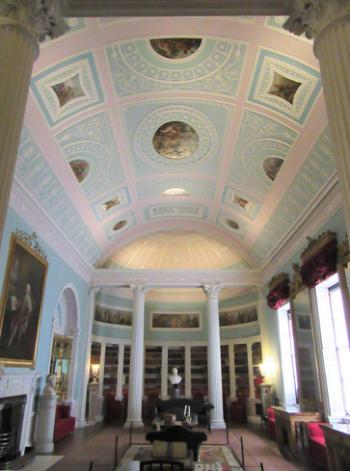London’s village of Hampstead
This item appears on page 14 of the April 2018 issue.
North London’s village of Hampstead first caught my attention when I learned that the tour “Old Hampstead Village,” offered by London Walks (London, England; phone 020 7624 3978, www.walks.com), was the favorite of David, the gentleman who leads that organization, which offers dozens of different tours (April ’18, pg. 15).
If this tour, which is led by David, was his favorite, I had to see what was so special about Hampstead, so on a cool, bright Sunday morning in November 2017, my wife, Paula Owens, and I found ourselves looking for a cup of tea before the 10 a.m. start of the 2-hour walking tour.
What’s so special about Hampstead? For starters, it is claimed that more millionaires live there than in any other part of the United Kingdom. Many notables have resided (or currently reside) there, including Charles Darwin, T.S. Eliot and Sigmund Freud, to name a few.
There are over 60 English Heritage blue plaques (historical markers) in Hampstead commemorating the many diverse personalities who have lived there. As you might expect, there are many fine homes in the village.
The London Walks brochure describes Hampstead as London’s most picturesque neighborhood, a Georgian village atop a hill with London’s most “villagey” atmosphere.
There are narrow lanes, cobblestone streets and cottages. There are galleries, cafés, atmospheric pubs and shops, including many in the Hampstead Antique & Craft Emporium. It’s a pleasant getaway from London’s bustle, crowds and noise.
Hampstead is probably best known for Hampstead Heath. The hilly heath is a park covering 790 acres on a ridge that’s one of the highest points in London. There are fields, woodlands and ponds accessed by a network of trails.
There’s also a legally protected view of the London skyline from Parliament Hill in the southern portion of the heath. From there and other vantage points in the heath, you can see London’s skyline, the Thames River, the Canary Wharf area and the O2 Arena (under the Millennium Dome).
Our favorite attraction, which Paula and I visited after the tour, was Kenwood House, a stately palace located in the northern portion of the heath. We found it to be at least a 20-minute walk from the Hampstead Tube station. (You can also take a bus, possibly with a connection, instead of walking.)
Kenwood House has a wonderful art collection, including Vermeer’s 1672 painting “The Guitar Player.” Admission is free, but a donation is requested.
Extensive grounds and gardens surround Kenwood House and merge into Hampstead Heath. At the rear of the house there’s also a popular café, with both indoor and outdoor seating, overlooking the heath. We dined at this café after our walking tour and were very pleased with our meal.
Once we finished there, we took a bus about two-thirds of the way back to the Hampstead Tube stop, then walked the rest of the way to the station (doing a little more exploring) before taking the Tube to St. Pancras rail station.
The Hampstead Tube station is centrally located near the intersection of Heath Street and Hampstead High Street. It’s on the boundary between Travelcard Zone 2 and Zone 3, so a zone 1-2 ticket or Travelcard will suffice.
This Tube station opened in 1907 and is the deepest Tube station, at 192 feet, in London. Fortunately, there are new high-speed elevators, so you won’t need to climb the 321 steps to the surface.
It’s somewhat tricky to get to Hampstead station because it’s located on the complicated Northern Tube line, which has multiple branches. Take a northbound train heading toward Edgware (not to be confused with the Edgware Road Tube station); do not take the northbound train on the branch toward High Barnet. It’s a 10-minute journey from Euston (not to be confused with Euston Square).
If you find yourself on the wrong train, the two northerly branches converge again at the Camden Town station four minutes north of Euston. You can switch to the correct train there.
STEPHEN ADDISON
Charlotte, NC

